Team C: Lacey, Selena, Amadahy
The camp rustled awake with another 7am bird walk today. Job showed us an array of the glorious avifauna of Kakamega Forest. Some highlights are the African Stone Chat, Red Cheeked Cordonbleu, and the hidden Jameson’s Wattle-eye. Ending with the flying leap of the red-tailed monkey over our heads. During breakfast we stewed in our bird knowledge and prepared for the upcoming official bird-a-thon. Two Cinnamon Breasted Bee-eaters swooped in on camp to inspire us for the next endeavour. We reconvened to start the competition at 10:20am. The teams seperated and followed along the different paths introduced to us by Job, looking in not only the high canopy but the undergrowth, mid canopy and open sky. Dr. Yuxiang and Cletus enjoyed the sun without the pressure of finding as many birds as possible. Some of the included species were Lesser Striped Swallow, Petite Cuckoo-shrike, Snowy Crowned Robin-chat, African Blue Flycatcher, and a Red Chested Cuckoo. At 12 PM after spending a couple minutes with noses buried in field guides, everyone was ready to show off their hard work. To those of you patiently waiting for this final match, the results are in:
- Team A (Yiling, Naomi, Ella) : 29 species
- Team B (Serena, Miranda, Akilah) : 8 species
- Team C (Lacey, Selena, Amadahy) : 17 species
- Team D (Shamini, Emily, Hannah): 10 species
- Team E (Amanda, Kirstie, Dani): 8 species
- Team F (Suzy, Jana, Holden) : 12 species
In first place once more is the ornithologically excellent Team A! Team C put up a good fight for the rematch, but to every teams credit, birds in a rain forest are fairly elusive. Well done to everyone using their best observation skills and using what we had all learned from our wonderfully knowledgeable guide Job.
Once everyone had packed up their bags for tomorrows early trip to leave camp, we were given a window into the abiotic world of the ecosystem that surrounded us. Dr. Yuxiang led us on a water chemistry crusade. He set up four instruments. One was an electrode for oxygen, a soil tool to measure pH and light etc., refractometer for light passing through sediment in water, and a multi use probe. All of these represent very important parts of the abiotic world that the biodiversity we look at belongs to. Did you know that frogs will leave their water at night because there is less oxygen in the water due to the lack of respiration done by water plants?
After our nature break, the storm clouds rolled in and thunder brought us back under the shelter. Where we then proceeded with the first of the highly anticipated debates. Team C started off with a debate on the effectiveness of debt for nature swaps. Our gracious moderator, Lacey, kept the debate civil between Amadahy, arguing in favor of the potential benefits from well managed swaps, and Selena, arguing against them and their clear complexities. Debt for nature swaps referring to the world debt of certain countries being relieved by outside parties such as a creditor countries and NGOs in order to invest that relieved debt into conservation.
Next up, was Team E starting their intense debate on monetization of nature and environment systems. Amanda gave a very strong argument for the benefit of monetizing nature and how it can incentivize corporations to care. However, Dani was a worthy adversary, she argued how flawed those monetization systems can be in practice. Their moderator, Kirstie, kept things as clean as she could while asking very insightful questions. Then we had the debate of Team B on the endlessly controversial topic of trophy hunting. While it may seem cut and dry, Miranda arguing for the topic brought up very important issues around the monetary value that comes with this form of tourism hunting. She was up against Akilah arguing with both empathetic and logical points regarding impact on animal systems. Both their doctorate personas had vicious remarks but were kept in line by their intuitive moderator Serena. Who’s summary was done tastefully considering how complex the topic can be. Once the first debates were done, ravenous students rushed through dinner in order to be ready for the night walk to the pond. We knew we were close when the sudden cacophony erupted of loud chirps and croaks surrounding us. The frogs gave us a deafening welcome! Students immediately leapt into action as the reeds were swarming with small African Tree Frogs, an appearance from a dwarf frog, a rare lateralis tree frog, and a nocturnal butterfly! After Dr. Stephen, as the compassionate teacher he is, showed us, everyone taught each other how to hold those small frogs safely. Miranda and Lacey were in their herpetological element and followed all the small croaks beckoning them closer to the pond. Many species were found and Dr. Stephen made sure to get a good photo-shoot of them all. All the frogs were gorgeous but weren’t fans of being directed, but you know, models… invertebrate zoology students also got a good kick out of the streams near the pond as they came face to face with wild planaria flatworms! Heading back to camp, it’s an early start to leave for Maasai Mara tomorrow, so everybody either went to sleep or relaxed by the fire pit.
Siku njema!
- Giant snail
- YX and Cletus
- night frog photography
- clawed frog
- Looking for frogs at a local pond
- debate
- water chemistry exercise
- white-eye
- AfrIcan treefrog
- frogging
- birdathon
- Jameson’s wattle-eye
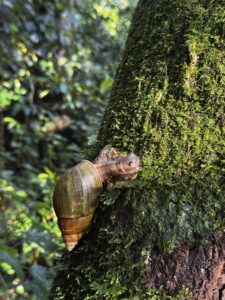
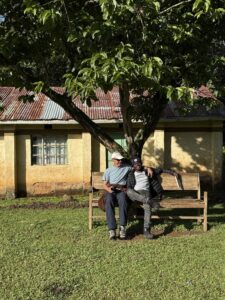
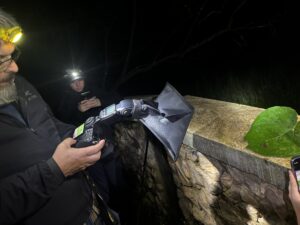
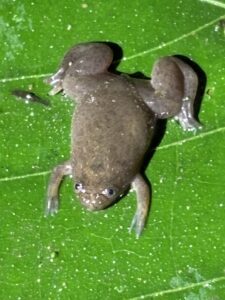
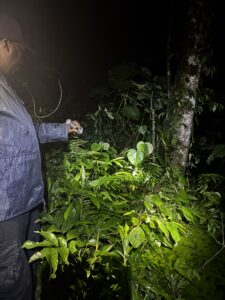
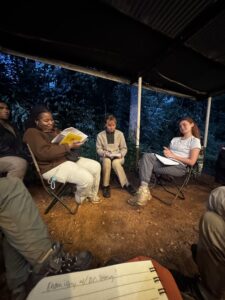
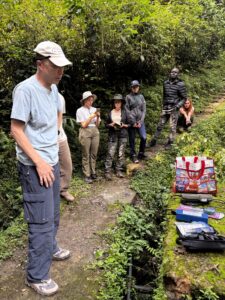
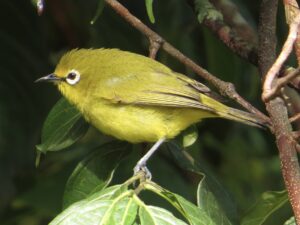
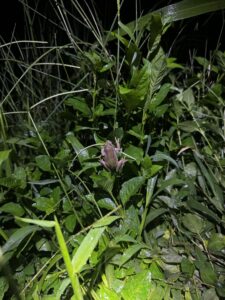
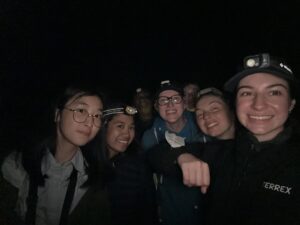
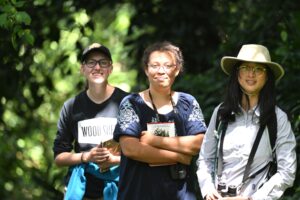
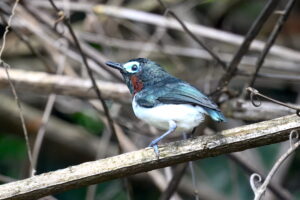
Leave a Reply